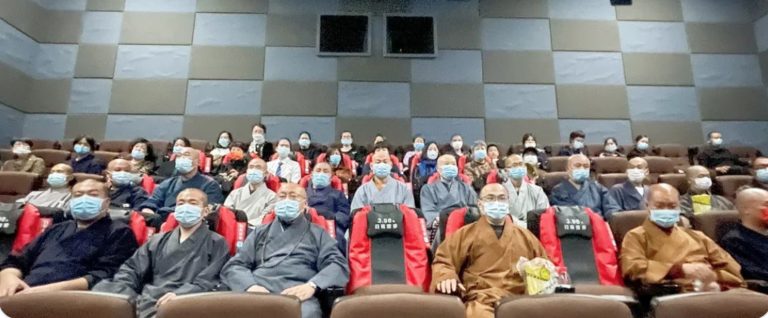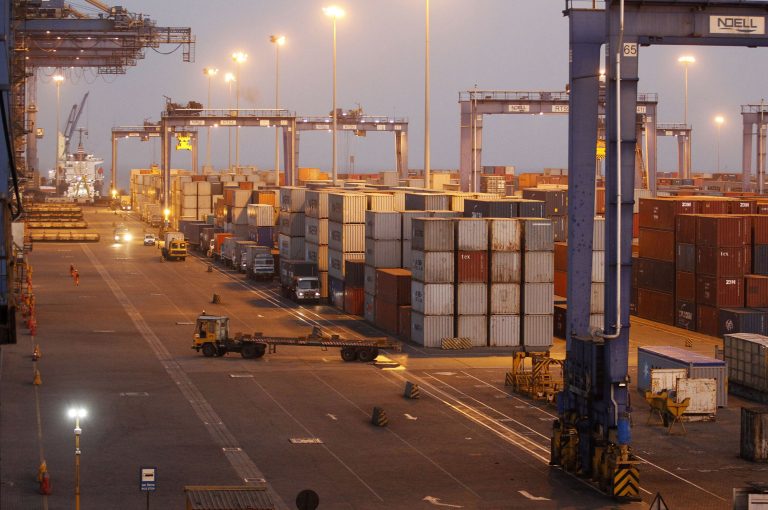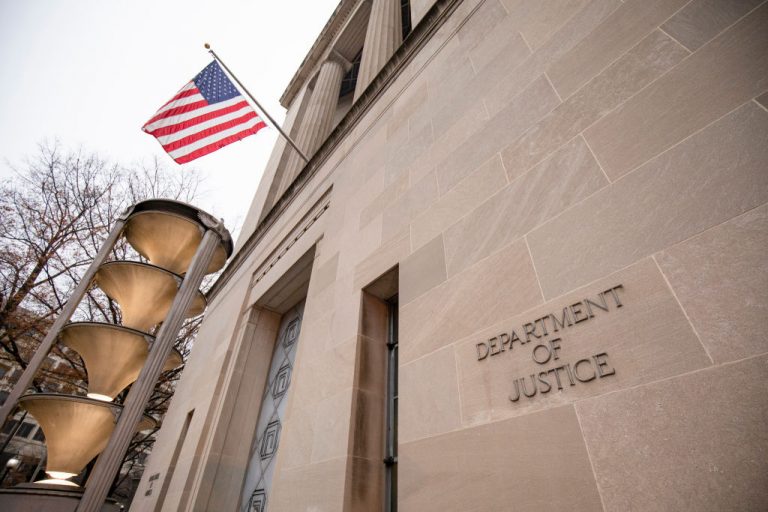An image showing a group of Buddhist monks in northern China’s Tianjin city watching a communist propaganda film about the Korean War has elicited scrutiny amidst heightened efforts by the authorities to instill “socialist core values” in religious communities.
The photo, posted by the public WeChat account of the Huasheng Buddhist temple, shows about 18 monks wearing sanitary masks while watching Battle at Lake Changjin, a recent production extolling a supposed victory of Chinese forces over U.S. troops in the early stages of the Korean War (1950–1953).
“The movie was so impressive. It was a riveting exercise in ‘[Communist] Party video education,’” the Huasheng temple wrote in its WeChat post.
Battle at Lake Changjin was released on Oct. 1, the 72nd anniversary of the Chinese Communist Party’s ascendance to power. It received heavy state promotion not only at different levels of government, but also throughout the CCP, schools, and non-government institutions such as temples.
The film is based on the Battle of the Chosin Reservoir in North Korea, where in late 1950 the Chinese People’s Volunteer Army (PVA) deployed 120,000 troops against a 30,000-strong U.S. force.
Success
You are now signed up for our newsletter
Success
Check your email to complete sign up
“Chosin” comes from the Japanese pronunciation of “Changjin,” and became the common Western name for the battle due to the fact that Korea had recently been a colony of Japan and many maps still used Japanese geographical names.
Though the PVA suffered many times more casualties than the Americans at Chosin and failed in their objective to rout the defenders, the CCP has held up the battle as a stunning victory. More recently, it has utilized the engagement and the Korean War in general as a means of drumming up anti-U.S. sentiment.
‘Monks of Mao Zedong’
The indoctrination of monks and other religious clergy has also been common in recent years.
In April 2021, various CCP-approved Chinese religious associations launched a “Love the Party, Love the Country, Love Socialism” campaign, asking their respective adherents to systematically study the history of the Party, celebrate the centennial of the founding of the Party, and “always follow the Party.”
CCP-approved religions include Buddhism, Daoism, Islam, Protestantism, and Catholicism. However, believers may only attend Party-sanctioned churches, temples, or mosques, where they are being increasingly required to study the CCP’s atheist ideology.
Religious Chinese who do not fall under the five approved religions, or who choose to set up their own places or forms of worship, are heavily persecuted by the CCP. For example, adherents of the Falun Gong spiritual discipline are routinely abused for their faith and tens of thousands are believed to have been murdered for their organs.
Since the mid-2010s, the Party has incarcerated more than 1 million ethnic Uyghur Muslims living in northwestern China, forcing them to give up their religious and cultural heritage in exchange for the CCP’s ideology. According to an annual report released this April by the U.S. Commission on International Religious Freedom (USCIRF), religious freedom in China has been on a steady decline in recent years.
The Communist Party’s Measures for the Administration of Religious Personnel, which took effect on May 1, 2021, require religious personnel to “support the leadership of the Chinese Communist Party” and “practice the core values of socialism.” While the CCP has been suppressing all religious beliefs, it has also been mutating the connotations of religion.
In a video from the Fenghua temple in Ningbo, Zhejiang Province, the temple leader can be heard saying, “Our purpose is to be the monks of Mao Zedong, for the Party, for the country, and the people.”
The leader continued to say, “We are today in front of the Party flag, the national flag, and the statue of the leader. We solemnly swear to be loyal to the Party; Loyal to the motherland; To love the leader; Love the people. …To be a good citizen, a qualified new man to vow to work for communism and fight for it till death.”


Buddhist monks being compelled to “work for communism and fight for it till death” is not a new concept. During the Korean War, many “reformed” Buddhist monks were coerced into service with the PVA, killing and being killed on the battlefield.
According to Military.com, “now celebrated as a massive victory against oppression by the West, the Chinese Red Army’s participation in the Korean War came at a massive cost, with an enormous death toll that’s likely far greater than 200,000 troops.”
As a result of the Battle of the Chosin Reservoir, the Chinese 9th Regiment suffered such great losses that it was unable to play a major role in operations until late in the Korean War. Estimates of Chinese casualties in the battle range from the official figure of 48,000 to 90,000, compared with 10,000 dead, missing, or wounded on the U.S. side.







